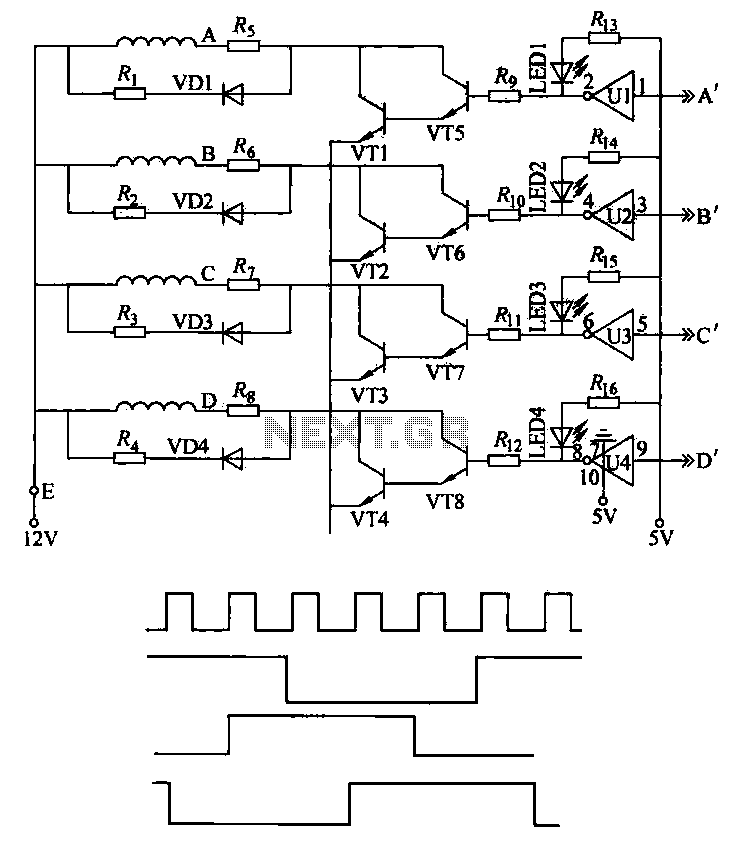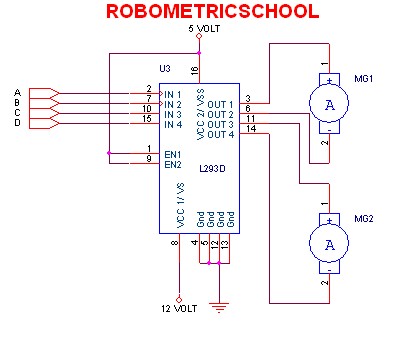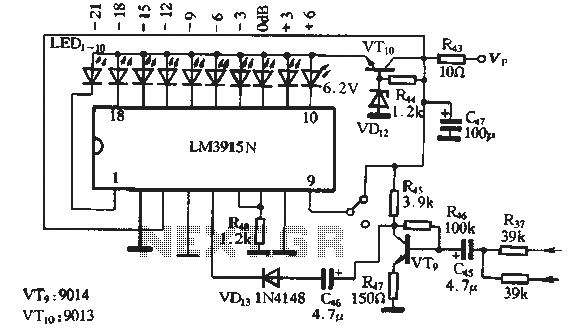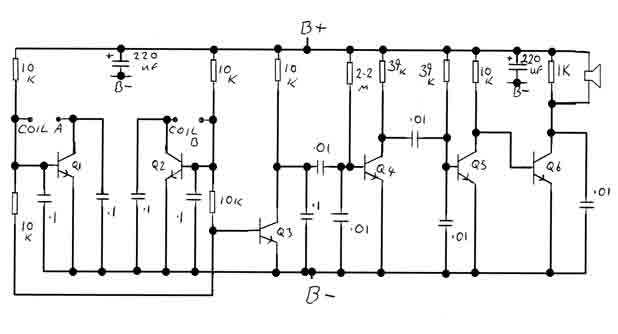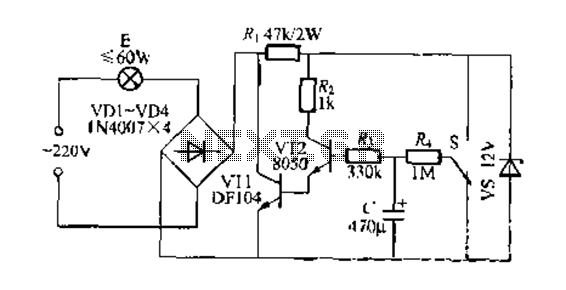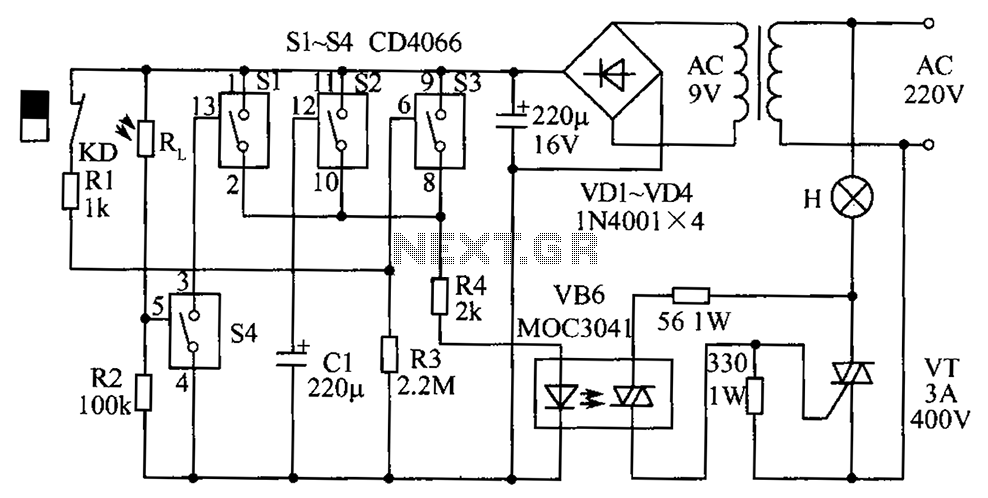
Video modulator circuit
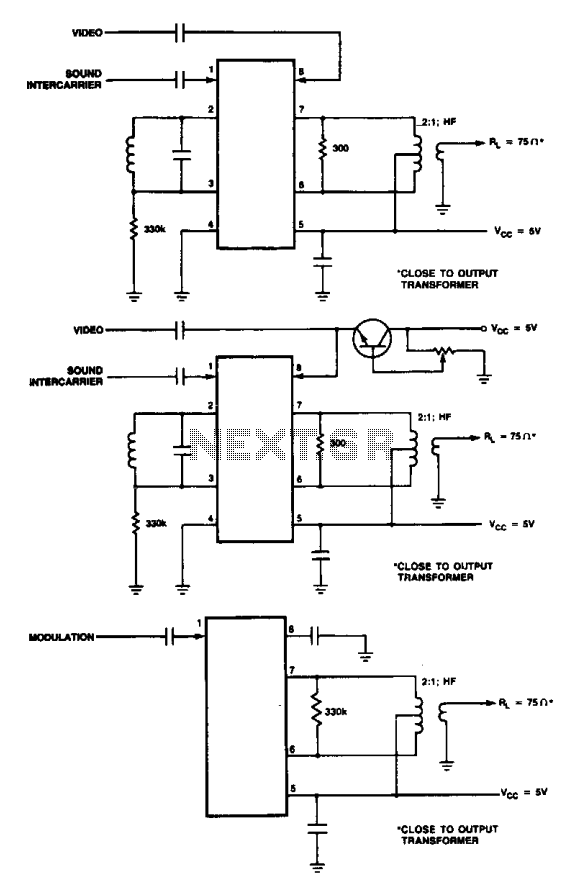
These are modulator circuits designed for the modulation of video signals on a VHF/UHF carrier. The circuits require a 5 V power supply and a few external components for negative modulation mode. For positive modulation, an external clamp circuit is necessary. The circuits can function as general-purpose modulators without the need for additional external components. The integrated circuit (IC) used is the TDA6800.
The TDA6800 is a versatile integrated circuit specifically designed for modulating video signals onto VHF and UHF carriers. This modulator circuit is suitable for applications in television broadcasting, video transmission, and other related fields.
The circuit operates at a nominal power supply of 5 V, which is essential for the proper functioning of the IC and the modulation process. In negative modulation mode, the circuit requires a minimal number of external components, which typically include resistors and capacitors for filtering and stabilization. This simplicity allows for easy integration into various systems.
For positive modulation, an external clamp circuit is required to ensure that the video signal is properly biased for modulation. This clamp circuit can be implemented using a diode and a capacitor, which helps to maintain the signal level within the desired range and avoid distortion during the modulation process.
The TDA6800 IC itself contains all necessary circuitry for generating the modulation signal and can provide high-quality output with minimal distortion. Its design allows for flexibility in modulation schemes, making it suitable for a wide range of video applications. Additionally, the IC supports general-purpose modulation without the need for extensive additional components, enhancing its utility in various electronic designs.
Overall, the TDA6800 modulator circuits are efficient and effective solutions for video signal modulation, providing a reliable method for transmitting video over VHF and UHF frequencies.These are modulator circuits for modulation of video signals on a VHF/UHF carrier. The circuits require a 5 V power supply and few external components for the negative modulation mode. For positive modulation an external clamp circuit is required. The circuits can be used as general-purpose modulators without additional external components. The IC is TDA6800.
The TDA6800 is a versatile integrated circuit specifically designed for modulating video signals onto VHF and UHF carriers. This modulator circuit is suitable for applications in television broadcasting, video transmission, and other related fields.
The circuit operates at a nominal power supply of 5 V, which is essential for the proper functioning of the IC and the modulation process. In negative modulation mode, the circuit requires a minimal number of external components, which typically include resistors and capacitors for filtering and stabilization. This simplicity allows for easy integration into various systems.
For positive modulation, an external clamp circuit is required to ensure that the video signal is properly biased for modulation. This clamp circuit can be implemented using a diode and a capacitor, which helps to maintain the signal level within the desired range and avoid distortion during the modulation process.
The TDA6800 IC itself contains all necessary circuitry for generating the modulation signal and can provide high-quality output with minimal distortion. Its design allows for flexibility in modulation schemes, making it suitable for a wide range of video applications. Additionally, the IC supports general-purpose modulation without the need for extensive additional components, enhancing its utility in various electronic designs.
Overall, the TDA6800 modulator circuits are efficient and effective solutions for video signal modulation, providing a reliable method for transmitting video over VHF and UHF frequencies.These are modulator circuits for modulation of video signals on a VHF/UHF carrier. The circuits require a 5 V power supply and few external components for the negative modulation mode. For positive modulation an external clamp circuit is required. The circuits can be used as general-purpose modulators without additional external components. The IC is TDA6800.
